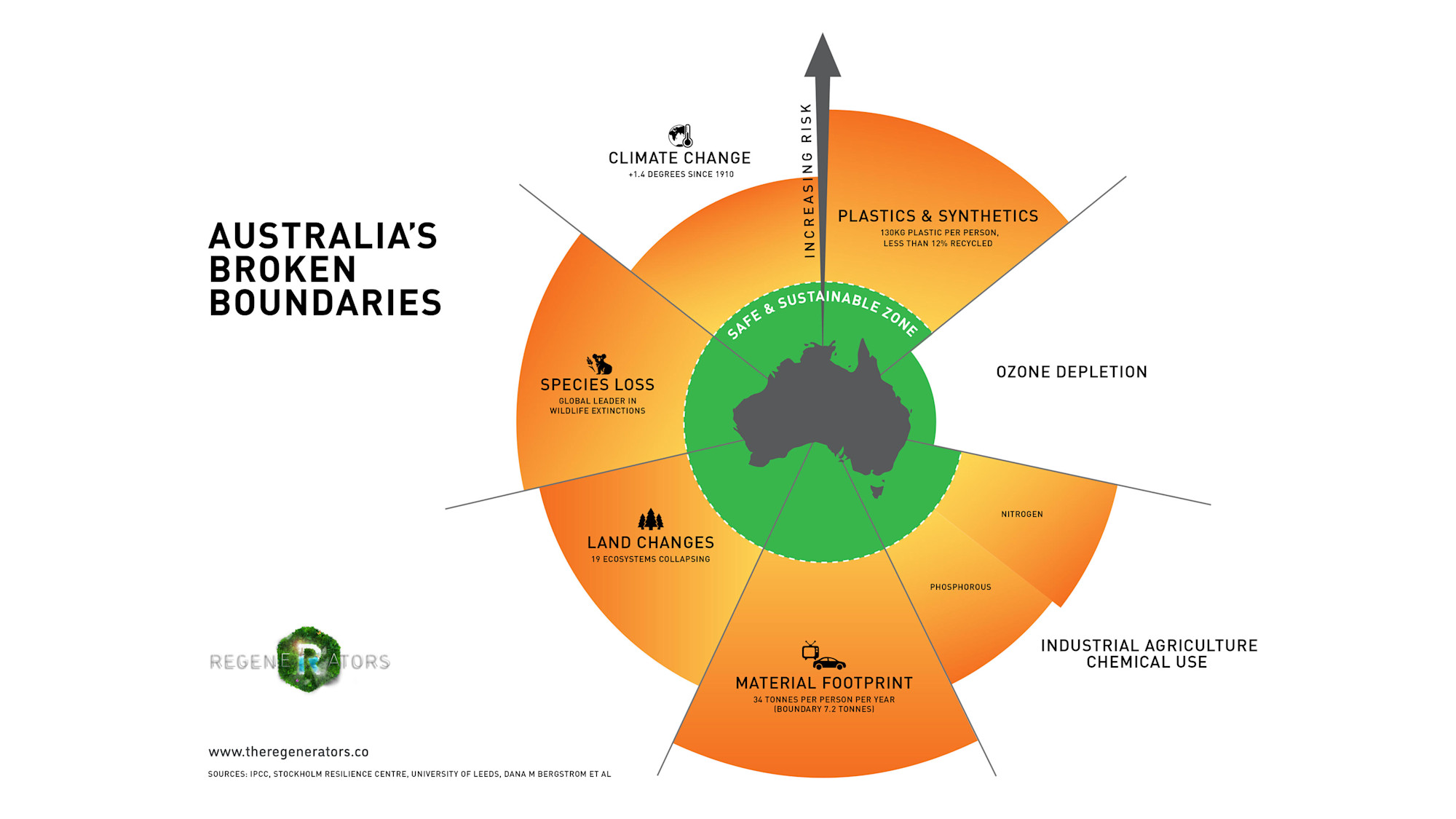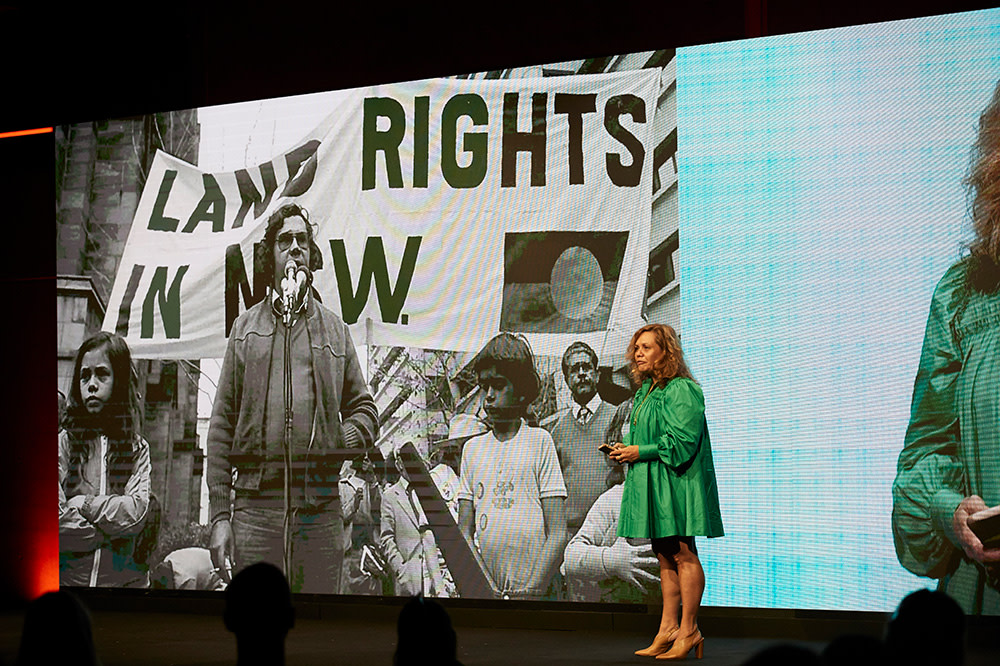City Utopia: Designing the Future of our Urban Environment

The global population is predicted to increase by 25% over the next three decades, which translates to double the buildings we have on the planet right now. This equates to building a city the size of New York every 30 days for the next 30 years. So, what should these cities look like?

Australia has warmed 1.4 degrees compared to rest of the world’s 1.1 degrees.
We are a leader in global wildlife extinction and species loss due to land changes.
Australia ranks number one of OECD countries for land clearing. We remove a patch of bushland or forest the size of the MCG every 86 seconds in this country, decimating habitats and emitting tonnes of carbon into the atmosphere.
Each Australian uses 34 tonnes of materials (minerals, timber, fossil fuels etc) every year, compared with Sri Lankans who use 3.4 tonnes per person per year.
Each person in Australia uses 130kg of plastic per year, recycling less than 12%.

Regenerative Thinking
“It’s not enough just to be sustainable. We’ve gone way beyond that, we’ve breached too many boundaries to get to a sustainable level. We now have to enact a regenerative process. We’ve got to regenerate to get to sustainability.”
Damon Gameau
Greening – by planting more trees and increasing the canopy by 40% in our cities, we can lower the temperature by five degrees. Planting is essential.
Water – capturing water is critical. China is creating ‘Sponge Cities’, building porous walkways and footpaths that capture water and store it in huge water tanks under the cities.
Materials – steel and concrete contribute to 12% of emissions, so what are the materials of the future? Wood, bamboo, hemp can all capture and store carbon in our buildings.
Eco corridors – reintroducing wildlife and nature to wild our cities. The Mayor of London, Sadiq Khan, is talking about making London the first.‘National Park City’, planting four urban forests throughout London.
Shared services – we’re using double what the earth can regenerate every year, so we need to think about shared services and reusing plastic in the design of our cities.

Creativity for Inclusivity

Diversity is the Holy Grail
“The one size fits all approach isn’t working. We’re not encouraging our diversity of people to be a community of people. We need to get back to the basics and invite the oldest living culture to a seat at the table.”
Councillor Yvonne Weldon

“Diversity is about agency. So often First Nations experts aren’t engaged or paid to be engaged in the strategic thinking of a place. We need diverse leaders. Today, the people who control the money bags and make the decisions aren’t diverse and they can’t talk for all of us.”
Chris Fox
“Even the most conservative farmers were talking about wanting to understand the knowledge systems that are embedded in this landscape that have been cultivated over a millennia. It’s like, in this time where we have had such degradation, why wouldn’t we consult with those people that get it, who know this land better than anyone? I thought that was really heartening, actually.”
Damon Gameau

Greening our Cities
“Sometimes cracks let the light in. If Covid showed us anything it’s the direct correlation between quality of environment and quality of health, where people in less fortunate communities were more likely to die. So often it comes down to brutality of environment, where less green space leads to higher stress and the built environment is actually responsible for degrading people’s mental health. The essence of sustainability is to restore, zero carbon emissions is no longer enough. We need great language and compelling ideas about why it’s so important and diversity and creative thinking will play a big role in communicating these ideas.”
Barrie Barton

“We’re animals with biological and psychological needs. If I ask all of you guys to shut your eyes and imagine your happy place, none of you are going to call out a place with loads of mental and screens. There will probably be sun, fresh air and materiality. That’s what drives us and that’s what starting to driving our design, away from technology and modernity, towards nature, diversity and mental wellbeing.”
Barrie Barton

The Future of Mobility

Where to from here?
“Water has always been, and will always be, an integral part of country, for cultural, social and economic reasons.By creating sites that place connection with water and with Country at their core, we can respect Aboriginal history and heritage. I’m committed to making sure everyone, especially those who are marginalised in the halls of power, are included in this great city, and connection to local people and community will hopefully lead to inherent sustainability.”
Councillor Yvonne Weldon